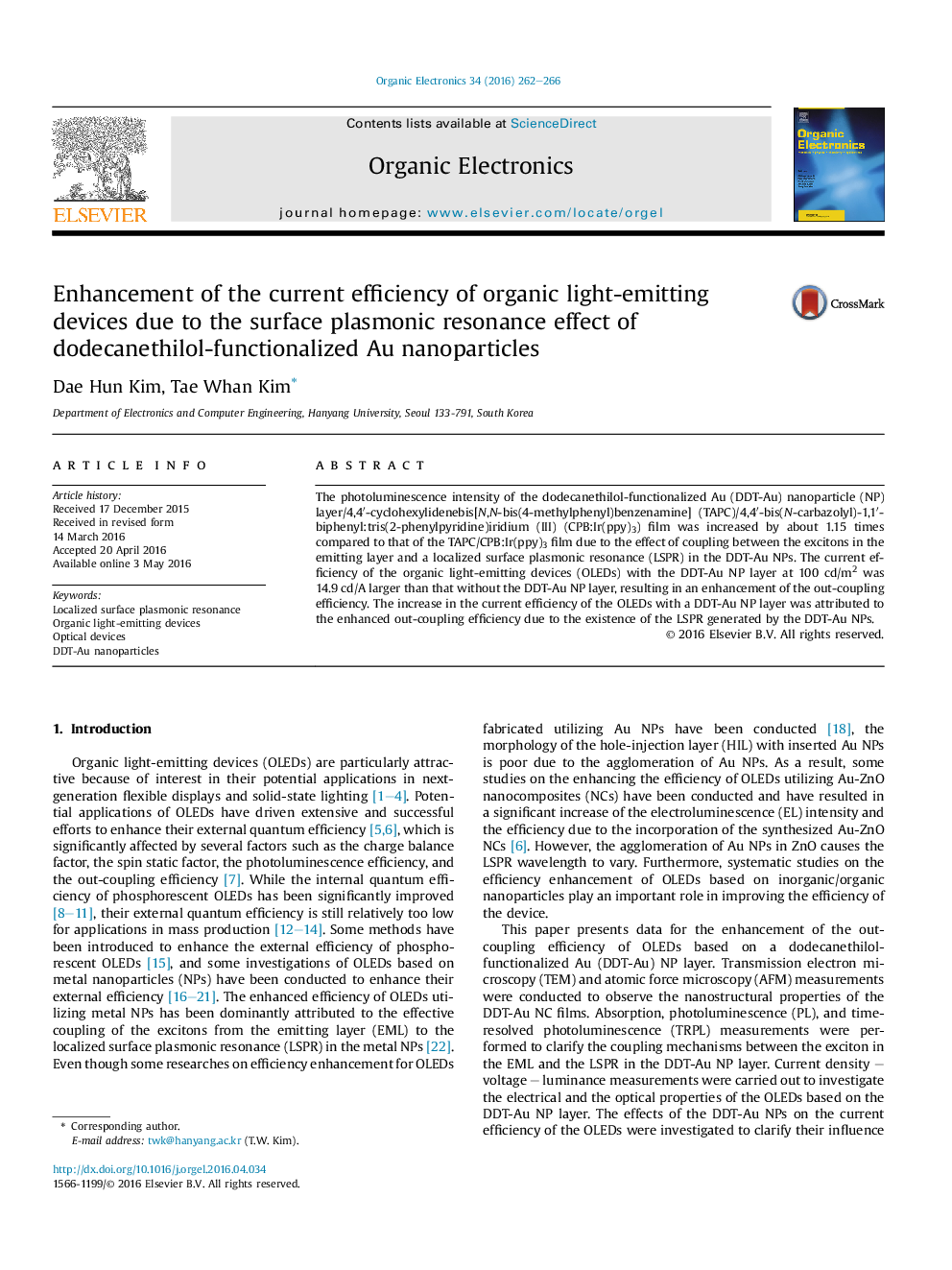| Article ID | Journal | Published Year | Pages | File Type |
|---|---|---|---|---|
| 1266927 | Organic Electronics | 2016 | 5 Pages |
•LSPR peaks for the DDT-Au films was shifted to red wavelength due to an increase in the spin coating rate.•Operating voltage of the OLEDs with a DDT-Au NPs was 10.4 V.•Current efficiency of the OLEDs with a DDT-Au NPs was 41.5 cd/A.•Enhancement of the current efficiency in the OLEDs was achieved by the LSPR.
The photoluminescence intensity of the dodecanethilol-functionalized Au (DDT-Au) nanoparticle (NP) layer/4,4′-cyclohexylidenebis[N,N-bis(4-methylphenyl)benzenamine] (TAPC)/4,4′-bis(N-carbazolyl)-1,1′-biphenyl:tris(2-phenylpyridine)iridium (III) (CPB:Ir(ppy)3) film was increased by about 1.15 times compared to that of the TAPC/CPB:Ir(ppy)3 film due to the effect of coupling between the excitons in the emitting layer and a localized surface plasmonic resonance (LSPR) in the DDT-Au NPs. The current efficiency of the organic light-emitting devices (OLEDs) with the DDT-Au NP layer at 100 cd/m2 was 14.9 cd/A larger than that without the DDT-Au NP layer, resulting in an enhancement of the out-coupling efficiency. The increase in the current efficiency of the OLEDs with a DDT-Au NP layer was attributed to the enhanced out-coupling efficiency due to the existence of the LSPR generated by the DDT-Au NPs.
Graphical abstractFigure optionsDownload full-size imageDownload as PowerPoint slide
